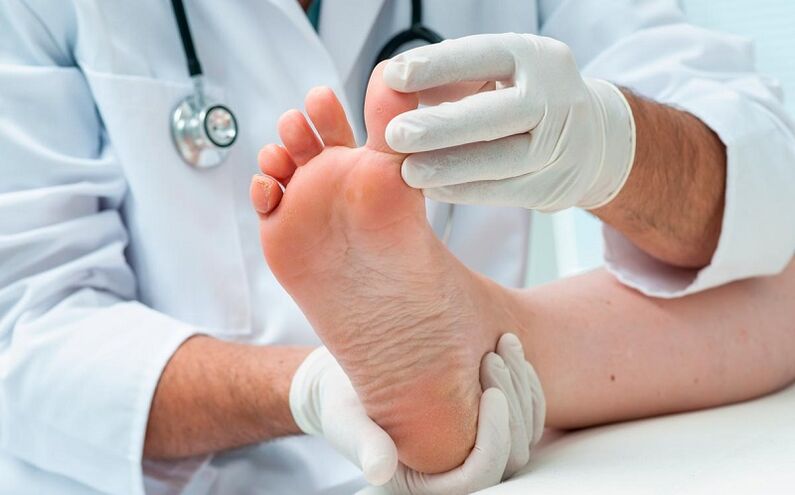Many people, who see ads on TV about medications against foot fungus, change channels and think: “This doesn’t worry me, I’ll never get the fungus! ” It would be nice if it happened, but catching this infection is easier said than done. that you think, and get rid of it is very difficult.

Sometimes they don’t see a dermatologist in a timely manner for a fungal infection on the foot, because they don’t believe that’s him. “This isn’t a mushroom, my friend has a mushroom, and he’s not like that, ” some have argued. In fact, the symptoms of this infection can be different, and if you experience discomfort in the foot area, see a doctor immediately. He will take a test and only after that will he determine the diagnosis.
Or maybe not notice itching, peeling skin, changes in the condition of the toenails? In the end, this is not a disease of internal organs and does not threaten something terrible. And embarrassed to go to the doctor, suddenly thinking that he was some kind of bum. And this opinion is also widespread among the population. And such an attitude towards personal health can be called irresponsible. However, it is easier to cure the fungus by catching it at an early stage, otherwise the disease will disappear or worsen again. And most importantly, your family members can also be infected with the fungus. Therefore, there are no two opinions on this issue. Take care, period!
How and where are they infected with the fungus?
Mushrooms can wait anywhere we go barefoot: on the beach, in the pool, in the bathhouse and even in ordinary apartments. In general, this infection can affect any area of the skin, but the feet are most often affected due to several factors. These include the constant wearing of shoes made of low -quality materials, increased foot sweat, more frequent contact with surfaces where fungi can live. Mycelium spreads rapidly under the skin, causing itching and other discomfort.
Let's take a closer look at the path of infection.
- Fungus can be spread from person to person when wearing the same shoes (e. g. , room slippers), socks, using a single towel, and even from a sleeping sexual partner.
- In public swimming pools, baths, saunas, on the beach when walking barefoot. For fungi, a humid environment is an ideal condition for reproduction. Slates or shoe covers can keep you from getting infected.
- In the manicure and pedicure room, if the tools are not sterilized well enough, or only when using other people's tools at home. It is better to visit a manicure specialist who has long not had such problems, and use personal tools at home and treat them with alcohol every time.
Strengthening the immune system will help reduce risk factors, but nothing cancels the rules of personal hygiene. It is important to trust the treatment of fungus to the doctor, and not to use folk recipes.
How to recognize foot fungus?
Many infections are suitable for the concept of fungi, their manifestations may be different. But there are a number of symptoms that are common to most of them.
First of all, it's itchy. At first weak, but eventually getting stronger, becoming unbearable, especially at night. Consecutive foot baths, sage and other ingredients provide temporary relief, but the fungus does not go away and continues to cause itching and burning.
Nails appear to be unrepresented. They turn yellow and dark, the color may be heterogeneous, broken, flaky, the surface is wavy. The changes in the nail plate start from the edges and gradually spread to the cuticle itself.
Over time, your feet start to sweat, even with sandals and slippers, and an unbearable odor develops.
The skin of the feet may not change color at all, or it may turn slightly red and then peel off.
If you experience at least one of these symptoms, you should see a doctor. Maybe he will rule out a fungal diagnosis, and itching may be a common allergy. But you can find out only after passing the test. Neglect of the disease can result in complete removal of the nail, constant scratches of the skin can damage it, and infection enters, causing boils.
How to treat foot fungus?
Treat as prescribed by a doctor! The test will show you the type of fungus you are infected with, and treatment depends on that. Sometimes doctors may advise the use of traditional medicine in combination with pharmaceutical preparations and medical procedures. Let’s take a closer look at all these methods.
- Laser treatment.During laser treatment, the radiation penetrates deep into the skin, destroying the fungal filaments - the mycelium. The number of sessions is from three to ten. Wave radiation is created by a special device. Fungi from such effects are gradually destroyed. Sometimes wave treatment can take up to three months with little rest.
- Medical procedures.This includes treatment with wave radiation, skin cleansing with a medical manicure or pedicure. Medical manicures or pedicures do not provide a deep treatment for fungus, they are already used at the end of the disease to make the nails on the hands or feet look more normal.
- Medicine.Only a doctor can prescribe this or that medicine. It can be in the form of tablets, ointments, creams, lotions, varnishes.
- People's solution.These are trays, injections, oils with ingredients and other plant parts. They are used only in combination with drugs. Bathing can relieve itching, improve the appearance of the skin, but it will not completely get rid of the fungus. The most popular are baths with oak bark or celandine, propolis tincture on alcohol, tea tree oil.
It makes sense to repeat it again: treating fungus is not an easy task, and you can not start it without a doctor, otherwise you can live the disease more deeply, but it will remind yourself periodically.





























